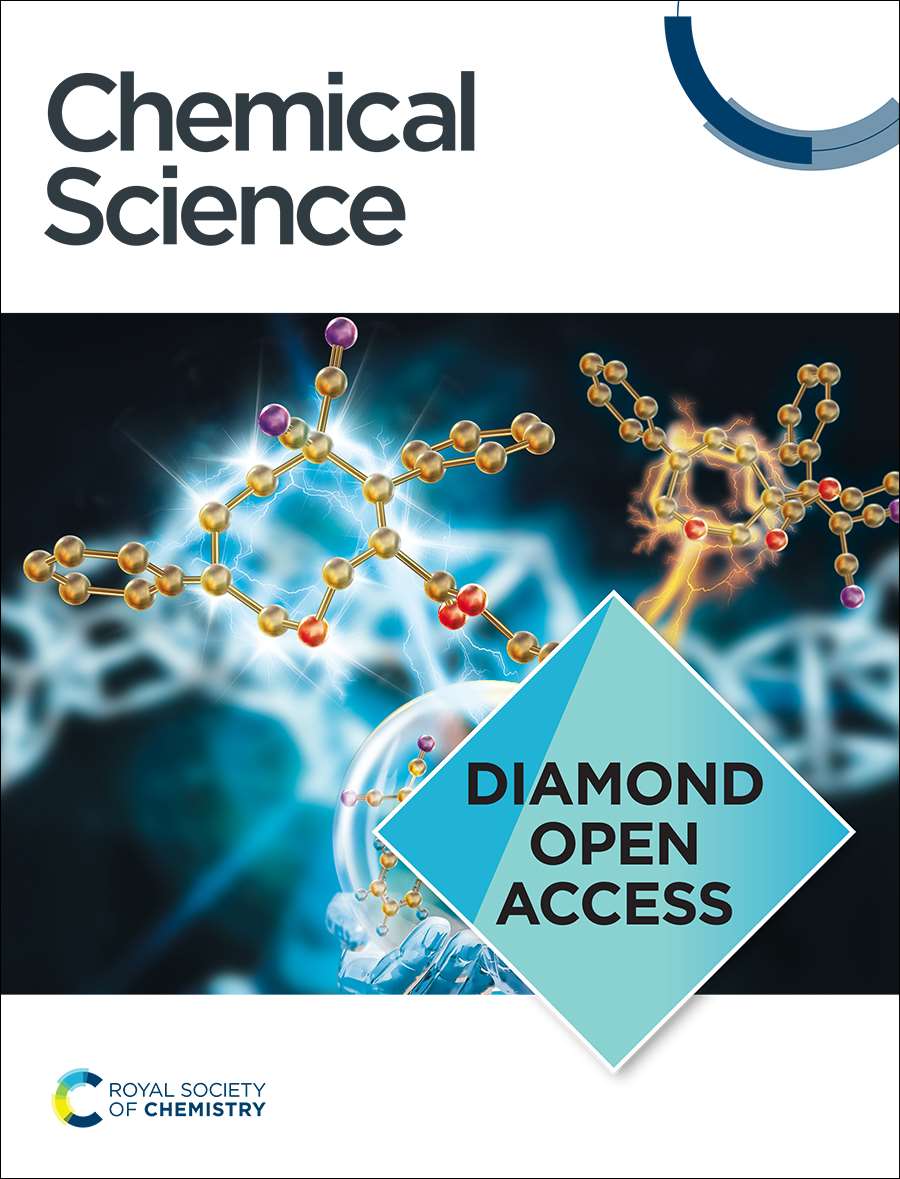利用 91Zr 固态 NMR 光谱探测 Zr 基金属有机框架在蒸汽流动下的水吸附性和稳定性
IF 7.6
1区 化学
Q1 CHEMISTRY, MULTIDISCIPLINARY
引用次数: 0
摘要
金属有机框架(MOFs)在水中的稳定性对于淡水生产、干燥、湿度控制、热泵/冷却器以及气体捕获和分离等广泛应用至关重要。特别是,由于大多数工业流都含有水蒸气,因此它们在蒸汽流下的稳定性至关重要。然而,据我们所知,迄今为止还没有研究过 Zr 基 MOF 在蒸汽流动下的稳定性,而 Zr 基 MOF 是研究得最多的 MOF 之一。我们在此探讨了三种类似 UiO 的 Zr 基 MOF,它们由相同的 Zr 簇和不同的有机连接体在 80 到 200 °C 的温度范围内构建而成。我们展示了利用高磁场(18.8 T)和低温(140 K)获取其 91Zr NMR 光谱的可能性,并通过比较实验数据和 DFT 计算的 NMR 参数对其进行解释。对这一具有挑战性的同位素进行核磁共振观测,并将其与更常规的技术(如 N2 吸附、X 射线衍射、红外光谱、1H 和 13C 固态核磁共振光谱)相结合,不仅能提供有关 MOF 框架可能坍塌的信息,还能提供有关分子吸附到孔隙中的信息。值得注意的是,我们发现由对苯二甲酸盐和富马酸盐连接体分别构建的 UiO-66(Zr) 和 UiO-66-Fum(Zr)在所有研究温度下的蒸汽流动中都能保持稳定 24 小时(UiO-66(Zr)甚至超过 7 天)、而含有 2-氨基-[1,1'-联苯]-4,4'-二羧酸链节的 UiO-67-NH2 在 80 至 150 °C 的温度范围内蒸汽流动时会降解,但在 200 °C 的温度范围内会保持不变。UiO-67-NH2 的稳定性较低是因为它的孔隙较大,Zr-O 配位键较弱,而它在 200 °C 温度下保持稳定则是因为孔隙中水的凝结较为有限。本文章由计算机程序翻译,如有差异,请以英文原文为准。
Probing water adsorption and stability under steam flow of Zr-based metal-organic frameworks using 91Zr solid-state NMR spectroscopy
The stability of metal-organic frameworks (MOFs) in the presence of water is crucial for a wide range of applications, including the production of freshwater, desiccation, humidity control, heat pumps/chillers and capture and separation of gas. In particular, their stability under steam flow is essential since most industrial streams contain water vapor. Nevertheless, to the best of our knowledge, the stability under steam flow of Zr-based MOFs, which are among the most widely studied MOFs, has not been investigated so far. We explore it herein for three UiO-like Zr-based MOFs built from the same Zr cluster but distinct organic linkers at temperature ranging from 80 to 200 °C. We demonstrate the possibility to acquire their 91Zr NMR spectra using high magnetic field (18.8 T) and low temperature (140 K) and to interpret them by comparing experimental data with NMR parameters calculated by DFT. NMR observation of this challenging isotope combined with more conventional techniques, such as N2 adsorption, X-ray diffraction, IR, 1H and 13C solid-state NMR spectroscopies, provides information on the possible collapse of the MOF framework but also on the adsorption of molecules into the pores. We notably show that UiO-66(Zr) and UiO-66-Fum(Zr) built from terephthalate and fumarate linkers, respectively, are stable over 24 h (and even over 7 days for UiO-66(Zr)) under steam flow at all investigated temperatures, whereas UiO-67-NH2 containing 2-amino-[1,1’-biphenyl]-4,4’-dicarboxylate linker degrades under steam flow at temperature ranging from 80 to 150 °C but is preserved at 200 °C. The lower stability of UiO-67-NH2 stems from its larger pores and its weaker Zr−O coordination bonds, whereas its preservation at 200 °C results from a more limited condensation of water in the pores.
求助全文
通过发布文献求助,成功后即可免费获取论文全文。
去求助
来源期刊

Chemical Science
CHEMISTRY, MULTIDISCIPLINARY-
CiteScore
14.40
自引率
4.80%
发文量
1352
审稿时长
2.1 months
期刊介绍:
Chemical Science is a journal that encompasses various disciplines within the chemical sciences. Its scope includes publishing ground-breaking research with significant implications for its respective field, as well as appealing to a wider audience in related areas. To be considered for publication, articles must showcase innovative and original advances in their field of study and be presented in a manner that is understandable to scientists from diverse backgrounds. However, the journal generally does not publish highly specialized research.
 求助内容:
求助内容: 应助结果提醒方式:
应助结果提醒方式:


